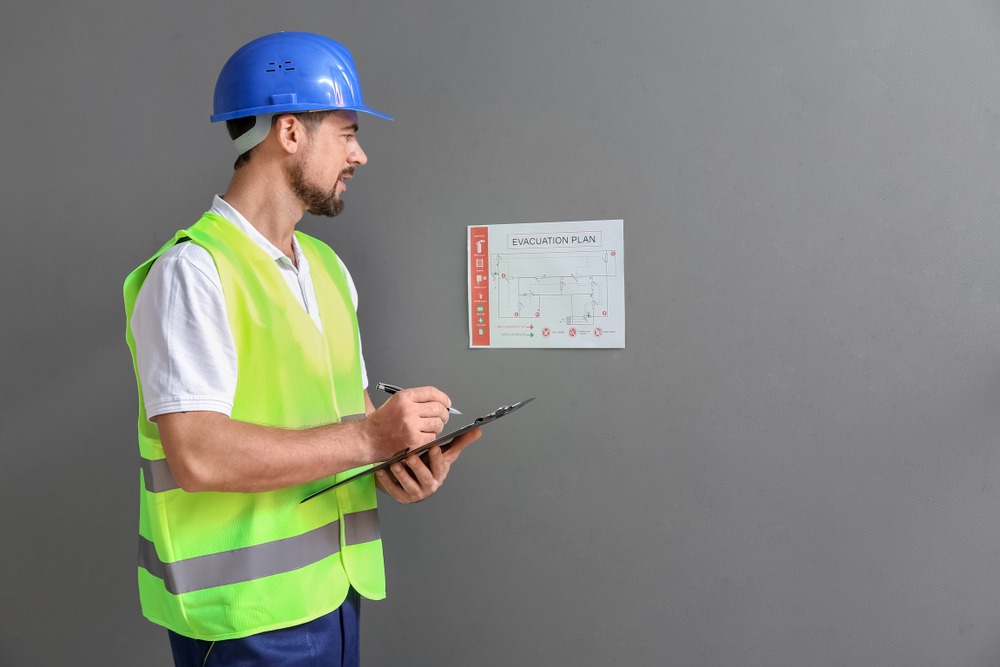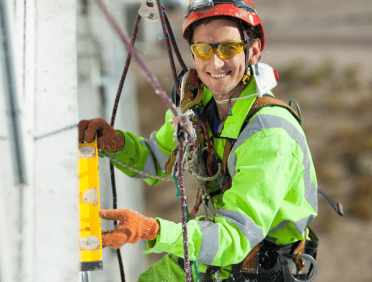When running a business, you will quickly learn that there are many things you need to keep in mind, think about and follow regulations for. One example of this is overall fire safety.
It makes sense that you want to keep your staff, customers and investment as protected and safe as possible, which means you need to know as much about fire safety in the workplace.
As the name suggests, fire safety in the workplace is the practice of keeping your staff, your customers and the building safe from fire.
There are lots of aspects of fire safety that you can keep in mind. Some are obvious, and others you may not realise that you need to do.
Fire Safety regulation
(What is the Regulatory Reform (Fire Safety) Order 2005?)
The Regulatory Reform (Fire Safety) Order 2005 is a framework that regulates fire safety within non-domestic properties in England and Wales. This includes a wealth of businesses, their workplaces, and some parts of multi-occupied residential buildings.
The primary responsibilities set out within the order are that you, as the business owner (or whoever is responsible for fire safety), have to take charge of. You have to ensure that your premises have reached the required standards that are set out as a part of the order, and as well as this, you have to ensure that your employees are provided with the adequate fire safety training that will allow them to stay protected and to keep your premises protected from fire too.
Main causes of fire in the workplace
Fires can occur in workplaces for a variety of reasons. The nature of fires that can occur will really depend on your business, your premises and the types of materials that you may find on your property.
The first is electrical faults. Of the 15,815 fires that happened in workplaces during 2017, around 25% of the fires were caused due to faulty electrical equipment. This could be that the wiring is frayed, that the extension lead used is overloaded or that the equipment itself is old and past its best.
The equipment can then overheat, causing a spark and then fire if left unchecked. The best way to try and combat this is to use PAT testing. This should be organised once a year and shows that a piece of equipment is in the best condition possible.
The second main cause of fires in the workplace is due to lack of staff training. Whilst you cannot always stop human errors from happening, if you provide your staff with the right level of training, then you are going to minimise it happening as much as possible.
Third, we have combustible materials, although this will depend on your industry and the materials that you have on your premises. You may find that you store flammable gases or liquids, which, if they are not handled, stored or looked after properly, then accidents can happen.
Fourth we have smoking as a cause of fire in workplaces. As we have banned smoking inside and with many businesses having smoking areas far away from the rest of their premises, this has lessened. However, smoking can and does still cause fires. The main reason for this is that the cigarettes are not put out properly, or the person is smoking in a place close to flammable materials.
The final cause of workplace fires is Arson. It accounted for almost a third of workplace fires during 2017. This is when a fire is started deliberately. It could be by people trespassing, youths messing around and trying to cause damage or even a disgruntled ex-employee or customer who wants to cause some damage too.
There can be a range of hazards that can relate to fire safety. Some of them may not apply to your business, whilst others definitely will. Knowing what these are and whether they are going to cause a problem within your business is a key part of risk assessment and something that you should be doing as a part of your obligations to fire safety.
The first hazard is the waste materials and combustible materials within your workplace. It is common to have a build-up of these materials and in particular paper and cardboard. This can cause an issue as it is the perfect fuel for fire should it break out.
You want to try and spread out where you store these materials, as having them in one place can cause an issue. Another good thing to do is to keep your combustible materials in a locked area away from any sources of ignition or the rest of the building.
The next hazard is flammable liquids. The volume of the liquid you have in your workplace may vary depending on what you do; however, even the smallest amount of fluid can cause a problem if it is not stored in the right way. This is because they can ignite, even with the smallest contact with a source of ignition.
It is important to minimise the risk as much as you can, which can be done by keeping any flammable liquids locked away in a cabinet.
Dust is another hazard, but not necessarily one that you may think of. You need to ensure that you limit dust build-up by having proper ventilation in your premises. You also want to keep any equipment that heats up free of dust as this can be a fire hazard too.
Heat-generating objects and equipment are one of the more obvious fire hazards in a workplace. Especially if those heat-generating objects are anywhere near materials that could be seen as combustible, you want to do your best to keep them away as much as you can, and if they are going to be left overnight, don’t leave them on and unplug them.
One final hazard is human error. This can be caused by untrained staff, and thankfully it is one of the easier things to fix as you just need to provide them with the right level of training and education. This will reduce the chance of any fires starting.
Who’s responsible for workplace fire safety?
The Regulatory Reform (Fire Safety) Order 2005 states that employers, owners and landlords are the ones who are responsible for fire safety on their premises and protecting anyone who lives, works or is on the premises.
What are the employee’s responsibilities for fire safety?
Whilst the order states that employers and owners are responsible for fire safety, the truth is that everyone in a workplace has some element of responsibility when it comes to fire safety.
It is important that all employees take general fire precautions and ensure fire safety equipment is operational and maintained. Every employee should complete the relevant fire safety training and know what is expected of them during a fire. They need to have an emergency plan, keep a record of any findings and review the risks within the workplace on a regular basis.
Who Enforces the Fire Safety Order?
It is usually down to the local fire and rescue authorities to be responsible for ensuring that the Fire Safety Order is enforced and that the fire safety legislations are followed.
How to audit your fire safety processes
It is great to have fire safety processes in place for your business in order to keep everyone safe, but you also want to make sure that you are checking those processes and that they are working for you as they should.
In order to do this, you are going to need to carry out regular fire safety audits. But, how do you do this?
The first thing to do is to listen to the law. Whatever the law says and the guidelines that are set out for fire safety, those are what you should be listening to. Failure to do this means that you are in breach of the order and could leave you in trouble.
It is also important that you audit your processes with the view that prevention is better than a cure. Of course, it is great to have plans in place should something happen despite your best efforts, but it is much more important to have the things in place to stop the bad from happening in the first place.
In doing this, you can identify fire hazards and then you can put changes in place that are going to make the difference.
Fire risk assessment process
A fire risk assessment is when you take a careful look at the building that you work in and whether it is safe from a fire prevention perspective. You need to be able to understand and identify any potential risks as well as be able to focus on safety precautions to keep people in the building safe.
They are incredibly important to do, and it is always worthwhile reminding yourself that you are not doing it to “protect your building” but for the people who work and visit.
It is important the person who carries out the fire risk assessment is someone who is suitable and competent and that they have the right level of understanding of what could be a fire risk and what appropriate action may need to be taken to prevent these from being a problem.
How to carry out the assessment?
There are usually five steps to follow when you are conducting a fire risk assessment. These are:
Identify fire hazards
Identify those who are most at risk
Evaluate those risks and work to reduce or remove them
Record all your findings and then prepare an emergency plan which can be shared and used during training
Review and update the fire risk assessment on a regular basis
If you follow these steps, then there is a great chance that you will have covered all of the key aspects of fire risk assessments and, therefore, will give yourself the best chance of protecting your premises.
Appointing Fire Marshals
One of the most important things that you can do when it comes to fire safety within your workplace is to ensure that you appoint fire marshals.
Fire marshals are people who are responsible for several aspects of fire safety within a building. They will look at the potential fire hazards and identify the risk that they pose, and they will also be someone who is in charge of the overall safety of people in the building when it comes to fire.
Fire marshals will also take the lead when and if you have any fire alarm or fire drill situations on your premises. They will ensure that everyone gets out safely and follows the guidelines that are within your fire safety procedures.
When you have this in mind, you will know that the person who you appoint as a fire marshal should be someone that you trust and that you will know will approach their role responsibly. They are going to be happy to take on the responsibility, and they are going to be able to attend the training that is required of them.
What Should Fire Training at Work Cover?
When it comes to fire training at work, you are going to want to make sure that the training that you provide has everything that it needs to contain. But, what should fire training at work actually cover?
The main points that you need this level of training to cover include:
An overview of why fire safety is so important
The different types of fire extinguishers and why you might need them
How the fire triangle works
How to apply knowledge to real-life situations
How to use fire extinguishers
The laws that govern fire safety
If your training covers these key aspects, then you are providing your employees with everything that they need to be able to keep themselves and those around them safe.
To download a .pdf of this blog, please click here












